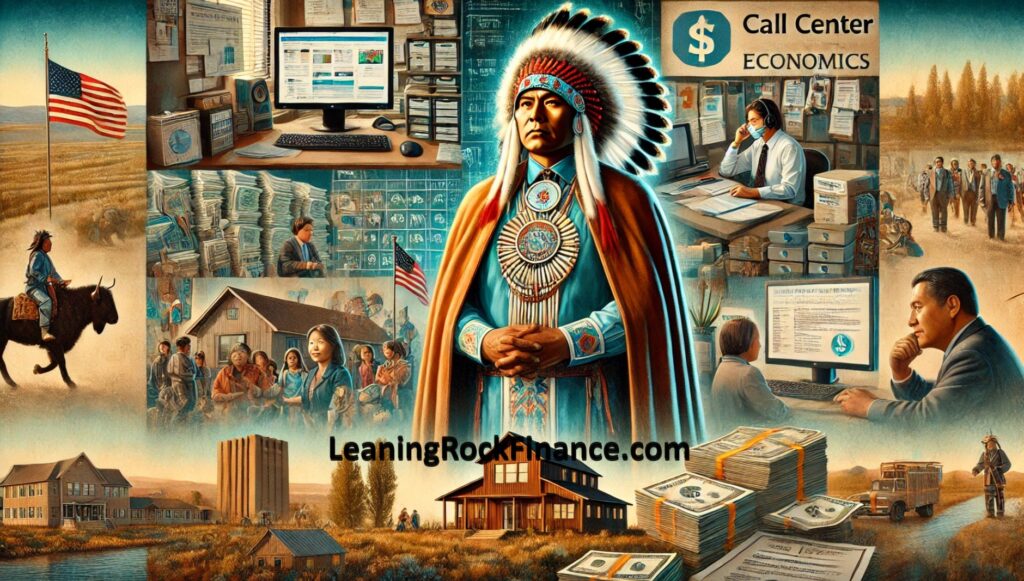
Why Outsourcing Isn't Exploitation: The Strategic Partnerships Powering Tribal Lending
The media’s portrayal of tribal lending is often biased. While recent articles, like this one by ProPublica, have highlighted concerns such as high-interest rates and consumer complaints, they do not fully acknowledge the positive economic impact that tribal lending can have on historically marginalized and economically challenged Native American tribes. Additionally, these lending programs significantly benefit millions of households in the subprime demographic urgently requiring quick and easy access to cash.
The Vital Role of Tribal Lending in Empowering Native American Economies
Understanding Tribal Sovereignty and Economic Necessity
Federally recognized Native American tribes operate as sovereign nations within the United States, granting them immunity from state regulations, including those governing lending practices.
This sovereign immunity is not a loophole but a fundamental aspect of tribal sovereignty, affirmed by the U.S. Constitution, treaties, and federal law. This sovereignty allows tribes to develop and operate businesses, such as online lending, which is crucial for economic self-sufficiency.
For many tribes, economic development opportunities are severely limited due to their remote locations, lack of natural resources, and historical disenfranchisement.
Tribal lending enterprises have emerged as vital tools for generating revenue that supports essential community services such as healthcare, education, infrastructure, and public safety.
For instance, the Lac du Flambeau Band of Lake Superior Chippewa Indians has utilized its lending businesses to provide employment and fund crucial services for its community, helping to preserve its culture and improve the quality of life on the reservation.
The Right to Outsource: A Common Business Practice
Banks do not want these consumers! Credit unions do not want these consumers.
Critics often point to the involvement of third-party vendors in tribal lending operations as evidence of impropriety or exploitation.
However, outsourcing is a standard business practice across various industries, allowing companies to leverage specialized expertise and technology that would be inefficient or impractical to develop in-house.
Consider the automotive industry, where car dealerships routinely outsource loan management to specialized software companies that handle everything from customer relationship management (CRM) to portfolio management. This allows dealerships to focus on their core business of selling vehicles while ensuring their financing operations are handled efficiently and professionally.
Similarly, business-to-consumer (B2C) retailers outsource payment processing to third-party companies to streamline transactions and enhance security.
Tribal lending enterprises partner with experienced third-party vendors to manage marketing, risk assessment, compliance, and customer service.
Why would a tribal lender attempt to build in-house when these partnerships enable tribes to maximize the profitability and sustainability of their lending operations, providing critical revenue for their communities?
Economic Realities and Legal Compliance
The current economic reality is that the costs associated with regulatory compliance, legal challenges, and potential fines are often lower than the expenses of prolonged litigation.
This is not unique to the tribal lending industry but is a pragmatic approach taken by many businesses operating in highly regulated environments. The decision to settle or pay fines is often a strategic choice to ensure the continuity of operations and protect the tribe’s economic interests.
The Unmet Needs of Subprime Consumers
Banks and credit unions do not want these consumers!
It is essential to recognize that millions of American consumers have limited or no access to traditional credit.
These consumers, often called subprime and near-prime, face significant challenges when unexpected expenses arise, such as car repairs, medical bills, or rent payments. Without access to credit, they risk spiraling into more profound financial distress, facing late fees, utility shutoffs, or even eviction.
Tribal lenders provide a critical service by offering credit to these underserved populations. While the interest rates on these loans are higher than traditional bank loans, they reflect the increased risk associated with lending to consumers with poor or no credit history.
It’s important to understand that these rates are not arbitrary but are required to cover the higher likelihood of default and the increased cost of servicing these loans. Moreover, these loans offer a lifeline to individuals who would otherwise have no other means to address their urgent financial needs.
The Economic Benefits of Tribal Lending
The conversation around tribal lending needs to be framed to acknowledge the vital economic role it plays in supporting Native American communities.
The media is disingenuous! Of course, WE already know this!
It is essential to ensure that lending practices are fair and transparent.
Equally important is to recognize tribes’ sovereignty and their right to pursue economic development opportunities that benefit their people.
By providing credit to underserved populations, creating jobs, and generating revenue for essential services, tribal lending enterprises contribute to the long-term sustainability and self-sufficiency of Native American tribes. As such, they should be viewed not as predatory but as a necessary and beneficial force for economic empowerment in Indian Country.
Here are some of the key benefits that tribal lending enterprises provide:
- Economic Empowerment: Tribal lending generates significant revenue for Native American tribes, helping to fund essential services and reduce reliance on federal assistance.
- Job Creation: These enterprises create employment opportunities on and off reservations, providing jobs in communities that often suffer from high unemployment rates.
- Financial Inclusion: Tribal lenders serve a market of millions of subprime consumers who lack access to traditional credit, helping them navigate financial crises.
- Sovereign Rights: By exercising their sovereign rights, tribes can operate businesses that align with their economic interests and self-determination goals.
- Outsourcing as a Strategy: Like other industries, tribal lenders outsource specific business functions to third-party vendors, enabling them to leverage specialized expertise and technology.
- Community Investment: Profits from tribal lending are reinvested into the community, funding education, healthcare, infrastructure, and cultural preservation.
Conclusion: A Balanced Perspective on Tribal Lending
The conversation around tribal lending needs to be framed to acknowledge the vital economic role it plays in supporting Native American communities.
The media is disingenuous! We already know this!
It is essential to ensure that lending practices are fair and transparent.
Equally important is to recognize tribes’ sovereignty and their right to pursue economic development opportunities that benefit their people.
By providing credit to underserved populations, creating jobs, and generating revenue for essential services, tribal lending enterprises contribute to the long-term sustainability and self-sufficiency of Native American tribes. As such, they should be viewed not as predatory but as a necessary and beneficial force for economic empowerment in Indian Country.

Our Expertise
- Leaning Rock Finance offers a suite of introductions, legal infrastructure, and lending regulatory ordinances enabling your Team to transition to online lending in collaboration with federally recognized Native American Indian tribes. Visit our website: LeaningRockFinance.com
4-WAYS I CAN HELP YOU!
Grab a copy of our “bible:” Learn More
Brainstorm: Learn More
The Business of Lending: Learn More
Free Bi-Monthly Newsletter: Learn More